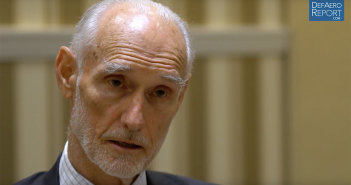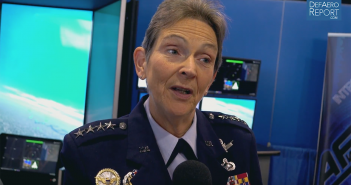
Author admin

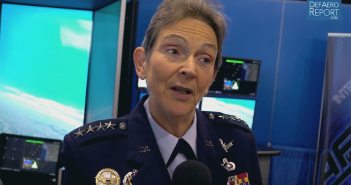
USAF’s Pawlikowski on Improving Logistics, Driving Down F-35 Costs, Sustaining Fleet
Gen. Ellen Pawlikowski, USAF, commander of the US Air Force Materiel Command, says a revised command and control process and additive manufacturing can help improve logistics, and expresses concerns over sustaining the Air Force’s F-35 Lightning II Fighter fleet during Part 2 of her Sept. 21, 2017, interview at the Air Force Association’s 2017 Air, Space & Cyber conference and trade show. The Defense & Aerospace Report’s coverage is sponsored by L3 Technologies & Leonardo DRS.
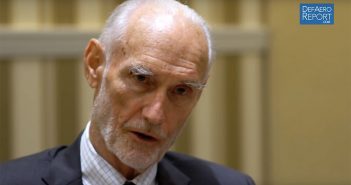
McPeak on Joining USAF, Flying the F-100, Embracing Inverted Flight
Gen. Tony McPeak, USAF Ret., 14th US Air Force chief of staff and a 2017 Air Force Association Lifetime Achievement Award recipient, discusses why he joined the Air Force, flying the F-104 and F-100 aircraft, and facing his fear of inverted flight during Part 1 of his Sept. 18, 2017, interview at AFA’s 2017 Air, Space & Cyber conference and trade show. The event was held in National Harbor, Md., just outside of Washington. The Defense & Aerospace Report’s coverage is sponsored by L3 Technologies & Leonardo DRS, and this interview is in partnership with the Air Force Association.
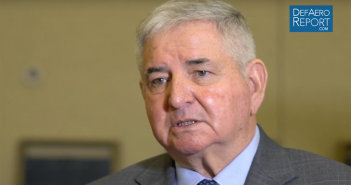
Fogleman on His Journey to the Air Force Academy, USAF
Gen. Ron Fogleman, USAF Ret., 15th US Air Force chief of staff and 2017 Air Force Association Lifetime Achievement award recipient, discusses his journey to the Air Force Academy and motivations for joining the service during an excerpt from a wide-ranging Sept. 18, 2017, interview at the association’s 2017 Air, Space & Cyber conference and trade show near Washington. Defense & Aerospace Report’s coverage is sponsored by L3 Technologies and Leonardo DRS, and this interview is in partnership with the Air Force Association.
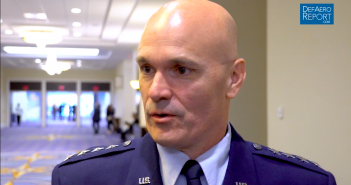
USAF AMC Chief Everhart on Combat Role, Aging Jets, Readiness, Hurricane Response
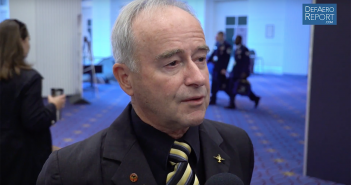
AIN’s Pocock: USAF’s Global Hawk, U-2 ‘Are Complementary’ Aircraft
Chris Pocock, defense editor at Aviation International News, says the RQ-4 Global Hawk and U-2 “Dragon Lady” should be seen as complementary vs. competitor aircraft, praises the US Air Force’s decision not to sunset the U-2, and discusses necessary upgrades, manpower challenges and the program’s future outlook during an interview at the Air Force Association’s 2017 Air, Space & Cyber conference and trade show near Washington. The Defense & Aerospace Report’s coverage is sponsored by L3 Technologies and Leonardo DRS.

GD’s Rush on F-16 Wideband Radome’s Function, Capabilities, Design Challenges
Bruce Rush, program manager at General Dynamics Mission Systems, discusses what its F-16 Wideband Radome does, what sets it apart from its predecessors and design challenges involved in its construction in an interview at the Air Force Association’s 2017 Air, Space & Cyber conference and trade show near Washington. The Defense & Aerospace Report’s coverage is sponsored by L3 Technologies and Leonardo DRS.

CNAS: ‘A New Era in U.S.-Russian Strategic Stability’
In a new report from the Center for a New American Security entitled “A New Era in U.S.-Russian Strategic Stability: How Changing Geopolitics and Emerging Technologies are Reshaping Pathways to Crisis and Conflict,” co-authors Jim Miller, PhD, and Richard Fontaine argue that “the parallel changes in U.S.-Russian political relations and the military-technological landscape are fundamentally reshaping the ways in which a U.S.-Russian crisis and conflict likely would unfold,” according to the report. “Neither side has yet internalized these overlapping geopolitical and technological changes,” they continue. “When they do, it is likely that each will take different and potentially conflicting lessons from them. As a result, risks could significantly increase the potential of a dispute leading to crisis, of a crisis leading to war, and of a war escalating rapidly.” In response, they identify these potential outcomes and make recommendations for handling each of them.
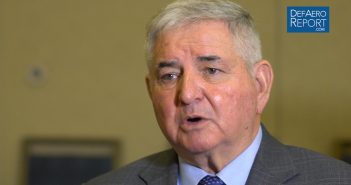
Former USAF Chief Fogleman on Lifetime Achievement Award, AFA
Gen. Ron Fogleman, USAF Ret., 15th US Air Force chief of staff and 2017 Air Force Association Lifetime Achievement award recipient, discusses being recognized for his service and what AFA means to him during an excerpt from a wide-ranging Sept. 18, 2017, interview at the association’s 2017 Air, Space & Cyber conference and trade show near Washington. Defense & Aerospace Report’s coverage is sponsored by L3 Technologies and Leonardo DRS, and this interview is in partnership with the Air Force Association.

